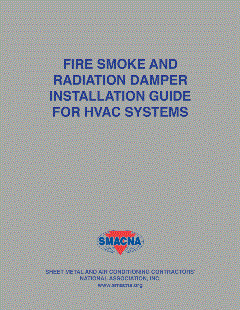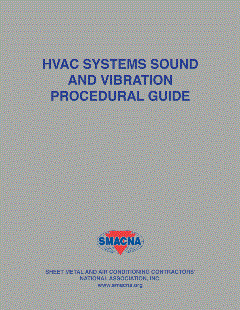Reliable, efficient ductwork is a crucial part of any HVAC system. Buildings may waste money without well-constructed, insulated and reinforced ducts, leading to higher costs and uncomfortable interiors. Consequently, contractors should take HVAC duct fabrication seriously.
Like many construction and engineering tasks, duct fabrication is a complex, multistep process. Here’s an overview of everything contractors should know about building and installing HVAC ducts.
Understanding HVAC Duct Regulations
The first step in HVAC duct fabrication is to review any relevant regulations. Specific state and industry standards vary, but most use guidelines from the American Society of Heating, Refrigerating and Air-Conditioning Engineers (ASHRAE).
Several ASHRAE standards and regulations may apply, but the Ventilation for Acceptable Indoor Air Quality is a good place to start. ASHRAE historically updates these regulations every three years, so be sure to check the most recent version before starting a project.
Standards typically outline minimum requirements for duct leakage, air pressure, testing and energy efficiency. Many of these influence design decisions, and noncompliance can harm the business, so it’s crucial to review applicable regulations before anything else.
Designing and Sizing Ducts
Once contractors understand the regulatory standards they must meet, they can begin the design phase. This should start with an inspection of the area where the ducts will go, including physical measurements. The site may feature low space tolerances or unique environmental concerns, and it’s easier to account for these in design rather than adapt ready-made systems.
Designs should also consider the end-users’ specific needs. Many urban housing projects now emphasize air quality, so they may require more advanced air filters. Some projects may require high energy efficiency as sustainability becomes more important. All these goals will impact designs, materials and installation, so they require early attention.
Choosing the Right Materials
One easily overlooked step in the HVAC duct fabrication process is material selection. This may seem a relatively straightforward consideration, but different materials can considerably impact costs, workability and energy consumption.
Steel may be the most common material, but it accounts for 8% of CO2 emissions globally, so eco-friendly companies may prefer to avoid it. There are several options within this category, like galvanized metal or stainless steel, each with unique cost, formability and strength benefits.
Insulation materials are also important to consider. Fiberglass is a popular option, but some argue it’s more prone to microbial contamination, potentially affecting people’s health. Contractors should review all their goals, budget concerns and available materials to make the best choice.
Gathering the Tools for the Job
It’s also important to select the right equipment for the specific project at hand. General-purpose tools can work, but more specialized options are often ideal, as they enable greater efficiency or precision. For example, tube cutting saws run at higher speeds than conventional bandsaws and can cut at many specific angles, which is ideal for making HVAC parts.
The best tools depend on the specific job. Contractors should review their budgets, designs and material types to determine what equipment will provide the most productivity, accuracy and cost-efficiency.
Cutting, Joining and Reinforcing
After these preparatory steps, it’s time to perform the actual HVAC duct fabrication work. During this stage, contractors should reference their designs and measurements closely. Remember the engineering axiom: measure twice, cut once. Similarly, be sure to calibrate all equipment before cutting.
If using a paper template, avoid cutting the line marks on the sheet to retain its accuracy for multiple blanks. Contractors should also chamfer all metal edges after cutting to make them safer to work with. Cuts and lacerations account for 30% of all workplace injuries, so mitigating these hazards is crucial.
The ideal joining technique depends on the segment's material and shape. Arc and gas welding work for metals of varying thicknesses, while plastic composite panels require bites and rivets. Remember to always clean before welding and stagger longitudinal welds.
Duct reinforcements should receive the same amount of care. Use strong materials and place reinforcements evenly and no more than 220 millimeters apart.
Final Quality Checks
The final step in HVAC duct fabrication is quality control. The Department of Energy requires teams to check the entire system for leaks after construction. Other regulations may need additional quality checks, though many only require testing part of the system.
Contractors can handle most inspections themselves, but remember to record everything carefully. It may be best to use a third-party inspector for final checks in some scenarios, especially in projects with higher regulatory requirements.
Follow These Steps for HVAC Duct Fabrication
HVAC duct fabrication is a crucial and often complicated process. However, contractors who understand these steps and their importance can tackle these projects with minimal concerns.
Many of these steps boil down to carefully verifying, measuring and considering various factors. Teams that do that can create ideal HVAC systems for any installation.







Report Abusive Comment